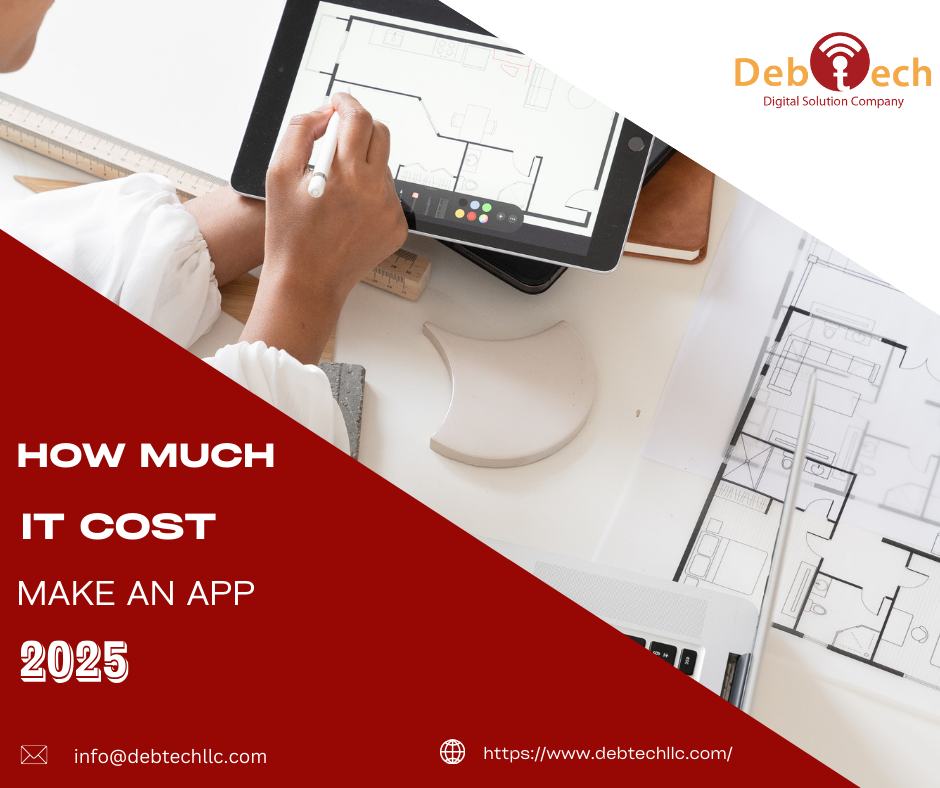How Much Does It Cost to Make an App? [2025]
app development cost 2025 , mobile app pricing , app development for small business , native vs cross-platform , MVP app development , reduce app development costIntroduction
Every business owner at some point has asked themselves: How much does it REALLY cost to develop an app? As a small business owner for example, you could be trying to engage your customers, one your solution can be an app while as a Digital marketing agency, you might want to scale your service offering, understanding what goes behind the cost of application development sits at the helm of it.
You go through 2025, the app development world has grown dramatically. The cost would depend on the complexity of your project's features and the development method you choose. With that in mind, let’s dive into what app development costs breakdown and how to get the most out of your budget without compromising on quality.
Why Are App Development Costs So Different?
What Influences the Development Cost of App?
App Complexity and Features
An app with a few features can cost anywhere from $10,000 – $50,000.
App of medium complexity, which includes real-time update, data sync, and custom UI, would cost around $50,000 to $150,000.
500K+ Advanced apps with heavy backend systems, real-time functionalities, and integrations.
Cost Features Complexity Level
Basic $10,000 - $50,000 Basic UI, minimal backend, no integrations
Medium $50,000 - $150,000 Data sync, custom UI, moderate integrations
Professional $150,000 – $300,000+ Real-time updates, extensive backend, complex UI
Choose between iOS,Android or Both?
Ultimately targeting both platforms doubles the cost of development versus developing for just one. But using cross-platform frameworks such as React Native or Flutter can decrease costs dramatically without major loss of quality.
Development Team Location
While app development in the US or Western Europe might start at $150/hr, turning to teams in Eastern Europe or Asia can lower the rate to $30–50/hr.
Data is the capability to make competitive business decisions.
Native vs. Cross-Platform app development: Cost vs Performance
• Native development: This offers better performance but at a higher cost as you will still need to develop separate codebases for iOS and Android.
• Cross-Platform Development: Cost-effective and rapid development, but can sacrifice performance in more complex applications.
Pros and Cons of Each Approach
|
Development Type |
Pros |
Cons |
|
Native |
Best performance and UI, robust functionality |
High cost and longer development time |
|
Cross-Platform |
Faster and cheaper, code reuse |
Limited access to native features |
What about maintenance and updates?
The cost doesn’t end with your app launch. You will have to plan for continuous maintenance, bug resolution, and upgrades. Maintenance costs are usually 15–20% of the initial development cost per year.
Costs That Might Surprise You
There are several hidden costs to consider beyond the development itself:
Backend Infrastructure: Servers and cloud services can cost a lot of money.
Apple App Store: $99/year; Google Play: $25 once
Marketing and Promotion: Never underestimate the cost of promoting your app. A rough rule of thumb is to allocate approximately 20-30% of your budget to marketing.
Tips on Reducing App Development Costs Without Compromising on Quality
From my own experience working with small businesses on app projects, certain strategies have worked wonders for us:
Focus on MVP (missing viable product)
It’s best to launch with the essential features and build upon them. That way, you can reduce costs and get early user feedback.
Use Pre-Built Solutions
No need to reinvent the wheel. Make use of open-source libraries as well as ready-made templates to reduce time and costs.
Work Alongside an Agile Team
Freelancers and offshore agencies can also offer their services at a low cost. They just have to be reliable and proven.
Real-Life Example: Small Business Success Story
One of my clients owns a thriving healthcare practice. As her business grew, so did her overhead—especially with separate tools for therapy, billing, scheduling, and onboarding. Each platform charged per client or therapist, which worked when she was just starting out. But at scale, those fees became a serious drag on profit.
We stepped in and built a custom solution that integrates all three systems into one unified platform. Now, everything—from appointments to billing to onboarding—runs through a single interface. Her data is synced, her operations are streamlined, and the monthly savings are now covering the cost of the custom software itself.
Key Takeaway: Should You Invest in One?
In 2025, there are more ways to create an app than ever before, but the costs can stack up quickly if you’re not intentional about your approach. It is important to know that choosing the right development method helps reduce costs without affecting quality.
If you’re a small business owner thinking about getting an app, sit down and map your priorities. Confused by it all and need some help? We’ll walk you through and help you with your entire process from start to finish — contact our team for a free consultation!
[Book a Website Strategy Call with Us Here] and start building a site that works harder than you do
